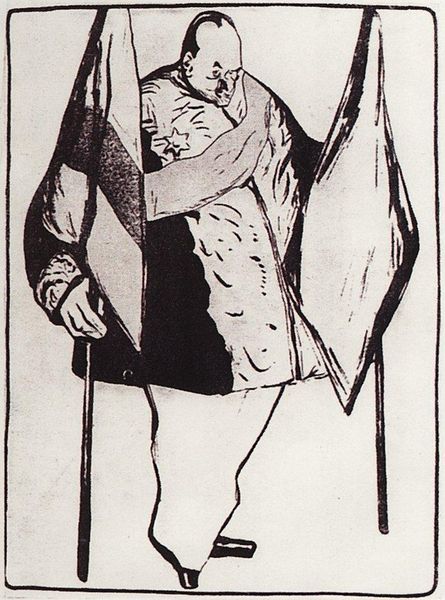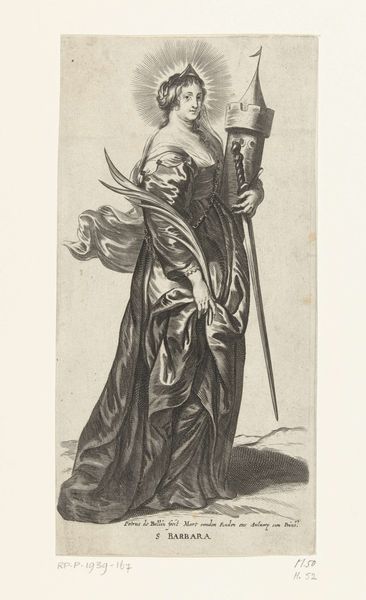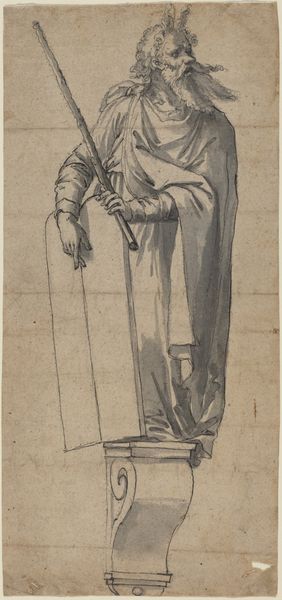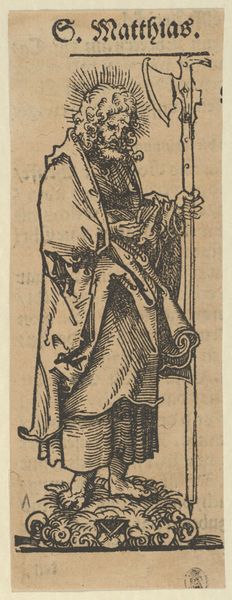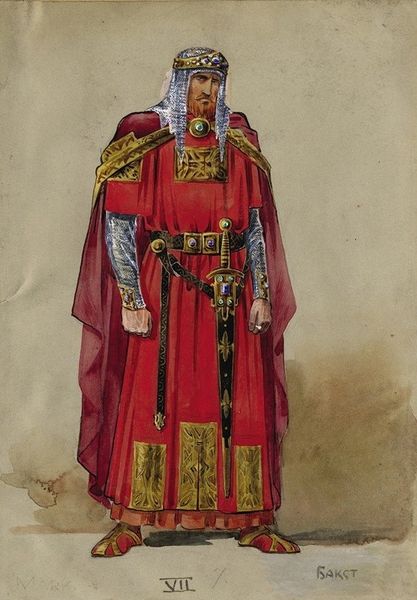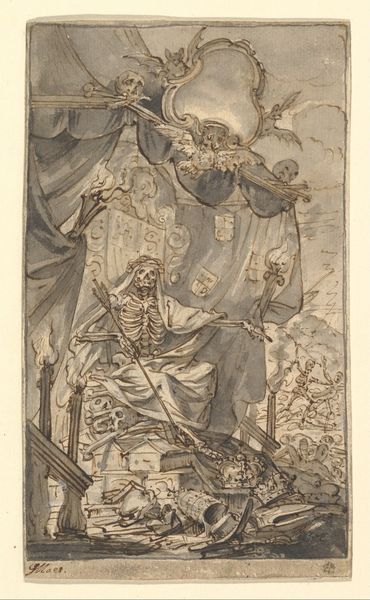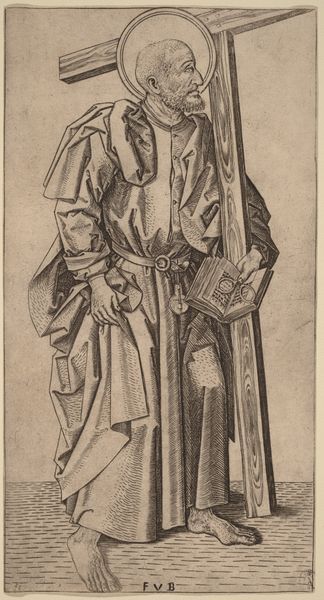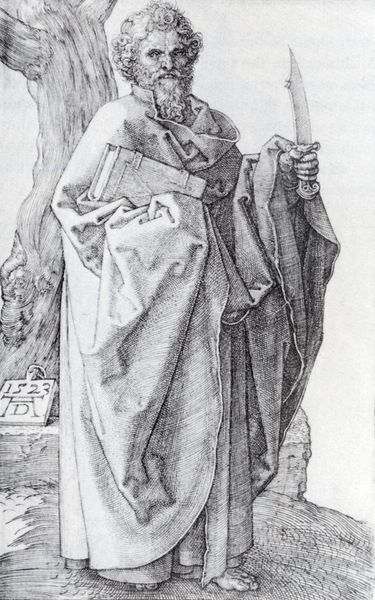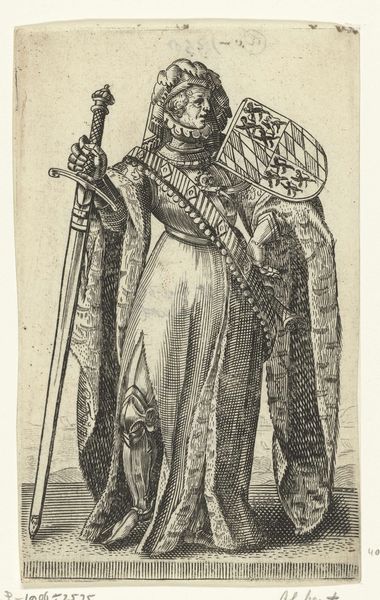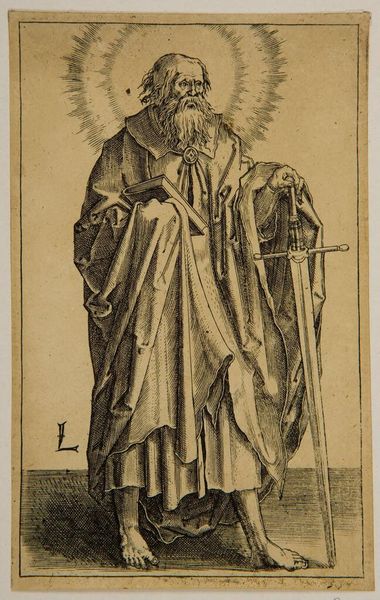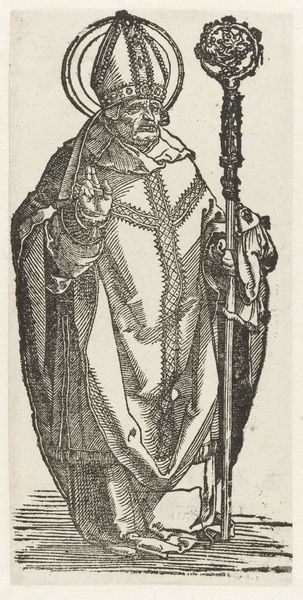
drawing, pencil
#
portrait
#
drawing
#
medieval
#
pencil sketch
#
figuration
#
pencil
#
history-painting
#
modernism
#
realism
Copyright: Public domain
Editor: This drawing, "Prince Yaroslav Osmomysl, warrior," created in 1919 by Oleksa Novakivskyi, is quite striking. Done in pencil, it feels like a figure pulled directly from the medieval era, though filtered through a modern sensibility. What stands out to you about this piece? Curator: The use of pencil, typically associated with preparatory sketches, becomes the very material of this finished portrait, blurring the line between study and final product. Think about the cost of materials in 1919, amidst war and revolution. The choice of readily available, inexpensive pencil and paper highlights a certain practicality, a democratizing impulse in artmaking. What kind of patronage do you think Novakivskyi was courting, and who would have seen this as finished? Editor: That's a really interesting point. I hadn't considered the economic context. So, are you saying that the choice of medium makes the piece more accessible and perhaps speaks to a wider audience? Curator: Precisely. It moves away from the exclusivity often associated with oil painting, for example, allowing for broader consumption and potentially reflecting the changing social landscape of the time. The labor is quite visible here too – you can almost trace the artist's hand. Does that connection change your read of the "medieval" style? Editor: It does. It’s less about romanticizing history and more about using history to create something new with the tools at hand. I'm seeing it as a dialogue between past and present, using limited materials but still creating something monumental. Curator: Exactly! This work, in its deliberate choice of material and subject matter, serves as a compelling commentary on art’s role during periods of significant social transformation.
Comments
No comments
Be the first to comment and join the conversation on the ultimate creative platform.


